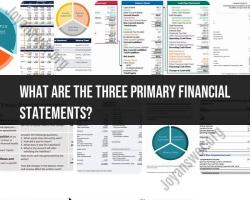What other benefits can I collect while on SSDI?
While receiving Social Security Disability Insurance (SSDI), you may be eligible for other benefits and assistance programs. However, it's important to note that some benefits may be offset or reduced based on your SSDI income. Here are some common benefits and programs that individuals on SSDI may be eligible for:
Medicare:
- After receiving SSDI benefits for 24 months, you become eligible for Medicare, which provides health insurance coverage for hospital care (Part A) and medical services (Part B).
Medicaid:
- In some states, individuals on SSDI may also qualify for Medicaid, a joint federal and state program that provides health coverage to low-income individuals and families. Eligibility and benefits vary by state.
Supplemental Security Income (SSI):
- While SSDI and SSI are two separate disability programs administered by the Social Security Administration (SSA), it's possible to receive both benefits concurrently in certain circumstances. SSI provides financial assistance to individuals with low income and limited resources.
Workers' Compensation:
- If you have a work-related injury or illness that led to both workers' compensation benefits and SSDI, your SSDI benefits may be offset to ensure you do not receive more than a specified combined total.
Veterans' Benefits:
- Veterans who receive VA disability compensation may also qualify for SSDI benefits. These benefits are separate and can be received simultaneously.
Private Disability Insurance:
- If you have private disability insurance through your employer or an individual policy, you may be eligible to receive benefits from that insurance provider in addition to your SSDI payments. Terms and conditions of your private disability insurance will vary.
Long-Term Disability (LTD) Insurance:
- If you have an LTD insurance policy, it may provide additional income during your disability, but the amount may be affected by your SSDI benefits.
Housing Assistance:
- Some individuals receiving SSDI may be eligible for housing assistance programs like Section 8, which provides rental subsidies to low-income individuals and families.
Food Assistance (SNAP):
- You may be eligible for the Supplemental Nutrition Assistance Program (SNAP), formerly known as food stamps, if your SSDI income falls below a certain threshold. Eligibility and benefits are determined based on factors such as income, household size, and expenses.
Utility Assistance:
- Some states offer utility assistance programs to help low-income individuals with their energy bills.
It's important to be aware that the rules and eligibility criteria for these benefits can vary depending on your location and individual circumstances. Additionally, income received from other sources, such as part-time work or investment income, may affect your SSDI benefits. To understand how receiving other benefits may impact your SSDI and to determine your eligibility for various programs, it's advisable to consult with a Social Security representative or a benefits counselor who can provide personalized guidance based on your specific situation.
Exploring Additional Benefits While Receiving SSDI
Social Security Disability Insurance (SSDI) is a federal program that provides monthly benefits to people who are unable to work due to a disability. SSDI benefits are based on your work history and earnings, and are not considered income for most other government programs.
As an SSDI recipient, you may be eligible for other benefits, such as:
- Supplemental Security Income (SSI): SSI is a federal program that provides monthly payments to people with disabilities who have limited income and resources. You may be eligible for SSI if your SSDI benefits do not meet your basic needs.
- Medicare: Medicare is a federal health insurance program for people age 65 and older, and for people with certain disabilities. You may be eligible for Medicare after receiving SSDI benefits for two years.
- Medicaid: Medicaid is a joint federal-state health insurance program for low-income individuals and families. You may be eligible for Medicaid if your SSDI benefits do not meet your medical costs.
- Food Stamps: Food Stamps is a federal program that provides food assistance to low-income individuals and families. You may be eligible for Food Stamps if your SSDI benefits do not meet your food needs.
- Section 8 Housing Assistance: Section 8 Housing Assistance is a federal program that provides rental assistance to low-income individuals and families. You may be eligible for Section 8 Housing Assistance if your SSDI benefits do not meet your housing costs.
- Low Income Home Energy Assistance Program (LIHEAP): LIHEAP is a federal program that provides assistance with home heating and cooling costs to low-income individuals and families. You may be eligible for LIHEAP if your SSDI benefits do not meet your energy costs.
Maximizing Support: Other Benefits Available to SSDI Recipients
In addition to the benefits listed above, there are a number of other benefits that may be available to SSDI recipients. These benefits may vary from state to state, so it is important to contact your local Social Security office to learn more.
Some examples of other benefits that may be available to SSDI recipients include:
- Vocational rehabilitation services: Vocational rehabilitation services can help you to develop the skills and training you need to return to work.
- Transportation assistance: Transportation assistance programs can help you to get to and from work, medical appointments, and other essential services.
- Job training programs: Job training programs can help you to develop the skills and experience you need to find a new job.
- Child care assistance: Child care assistance programs can help you to pay for child care while you are working or attending school.
Beyond SSDI: Supplementary Assistance Programs to Consider
In addition to the benefits that are available through the Social Security Administration, there are a number of other assistance programs that may be available to SSDI recipients. These programs may be offered by state or local governments, or by non-profit organizations.
Some examples of supplementary assistance programs that may be available to SSDI recipients include:
- Disability advocacy organizations: Disability advocacy organizations can provide support and information to people with disabilities. They can also help you to advocate for your rights and to access the benefits that you are entitled to.
- Peer support groups: Peer support groups can provide a safe and supportive space for people with disabilities to connect with others who are facing similar challenges.
- Financial assistance programs: Financial assistance programs can help you to pay for basic living expenses, such as food, housing, and transportation.
- Medical assistance programs: Medical assistance programs can help you to pay for medical expenses, such as prescription drugs, doctor's visits, and hospital stays.
If you are an SSDI recipient, it is important to explore all of the benefits that may be available to you. By maximizing your support, you can improve your quality of life and live more independently.













